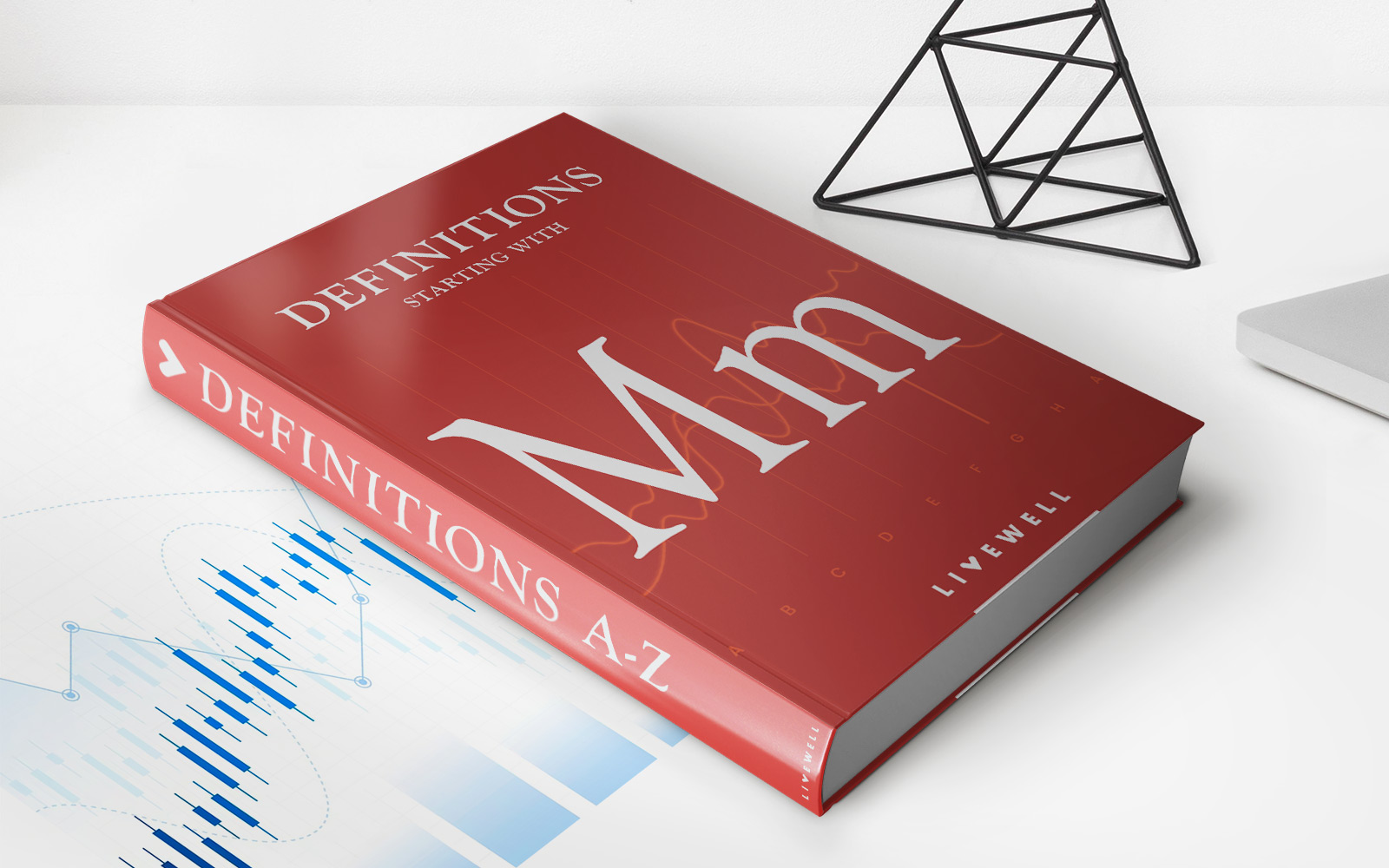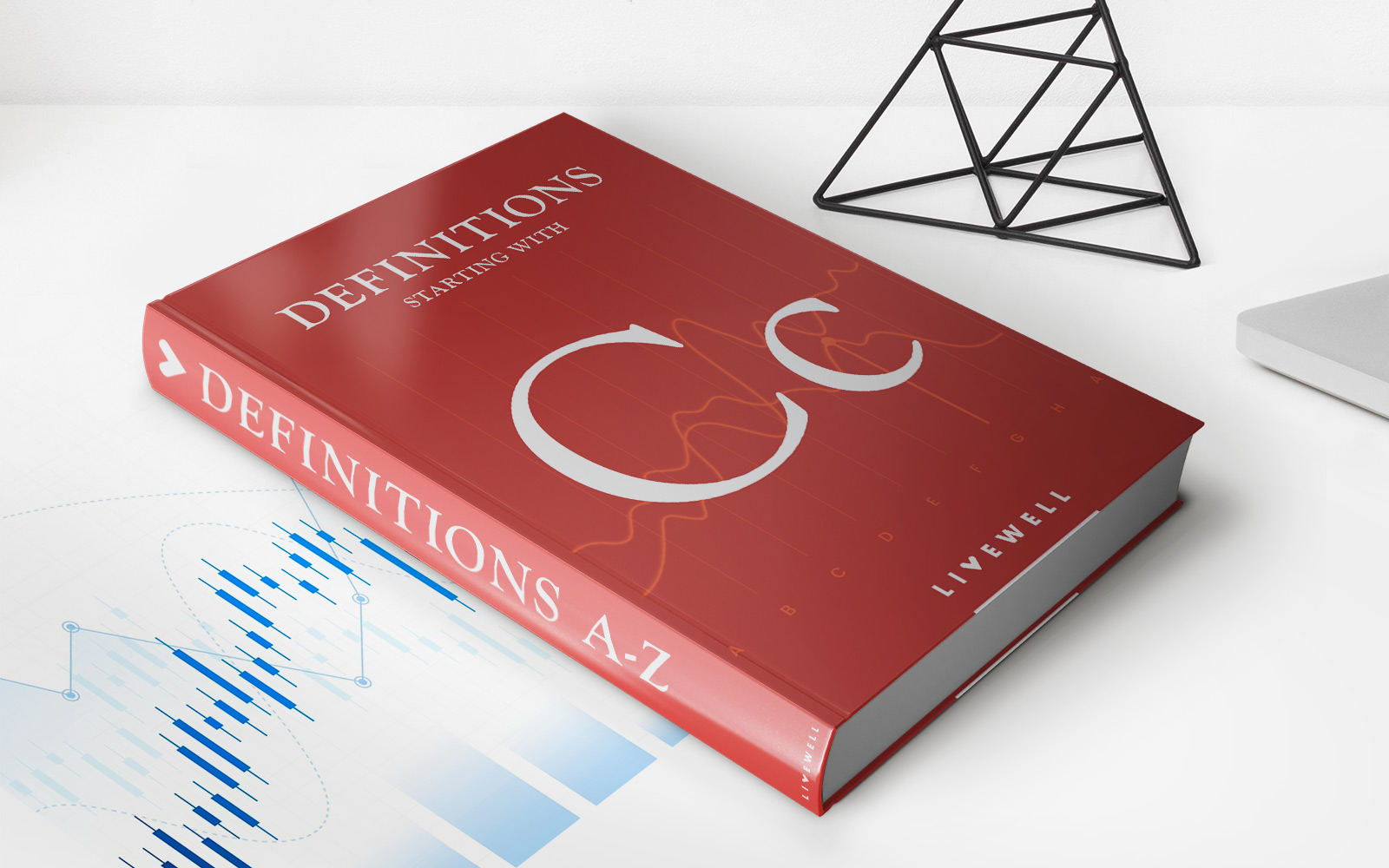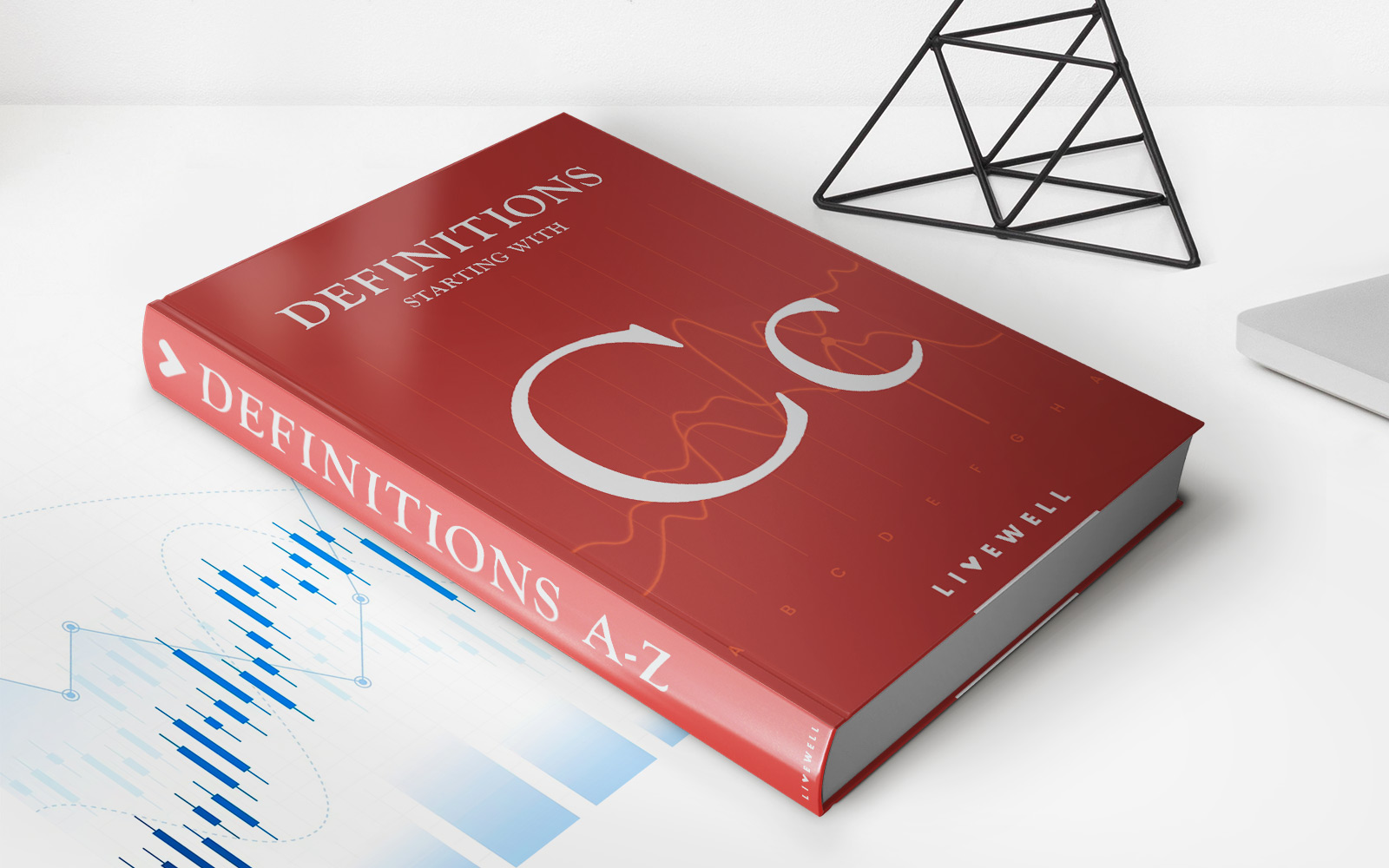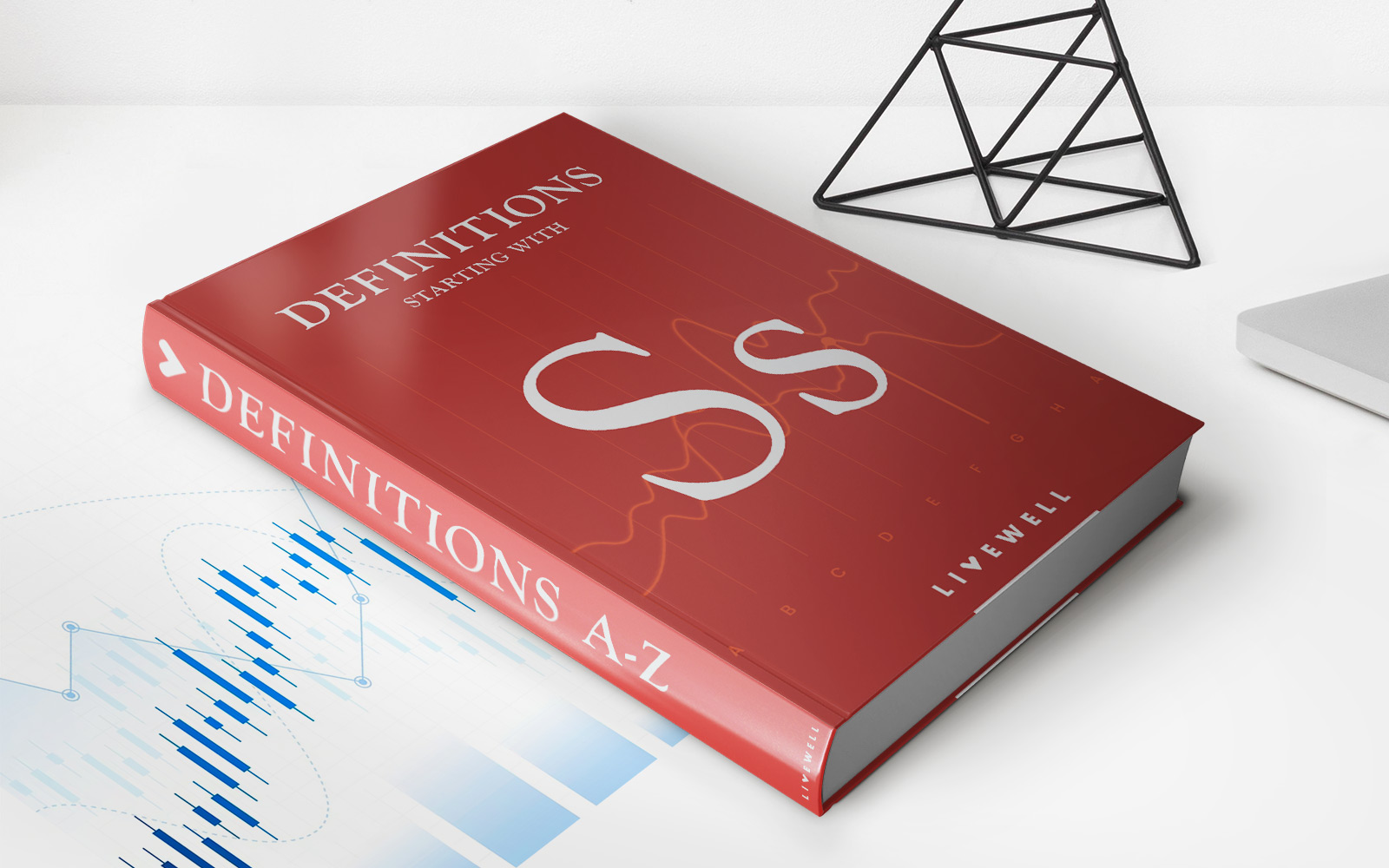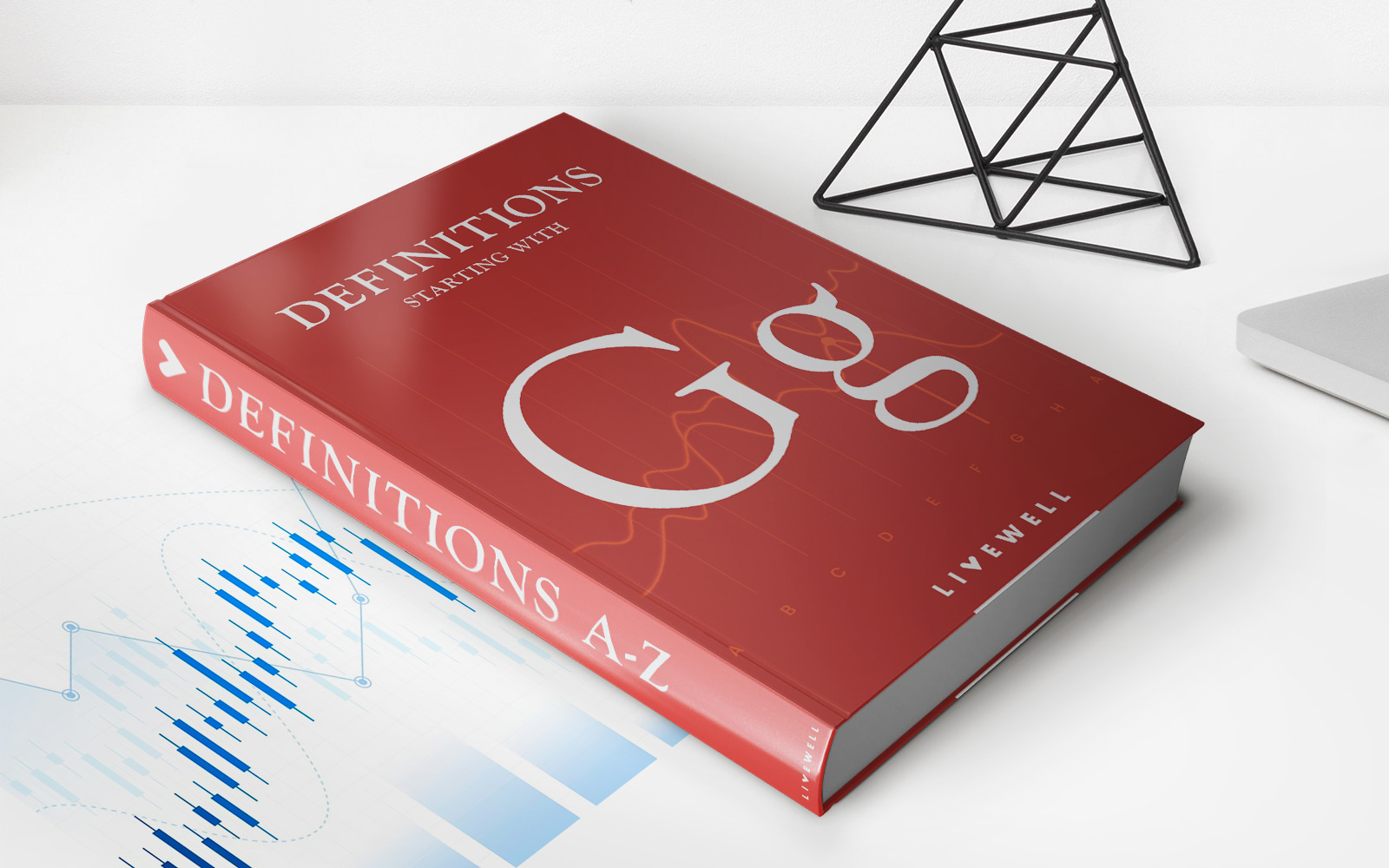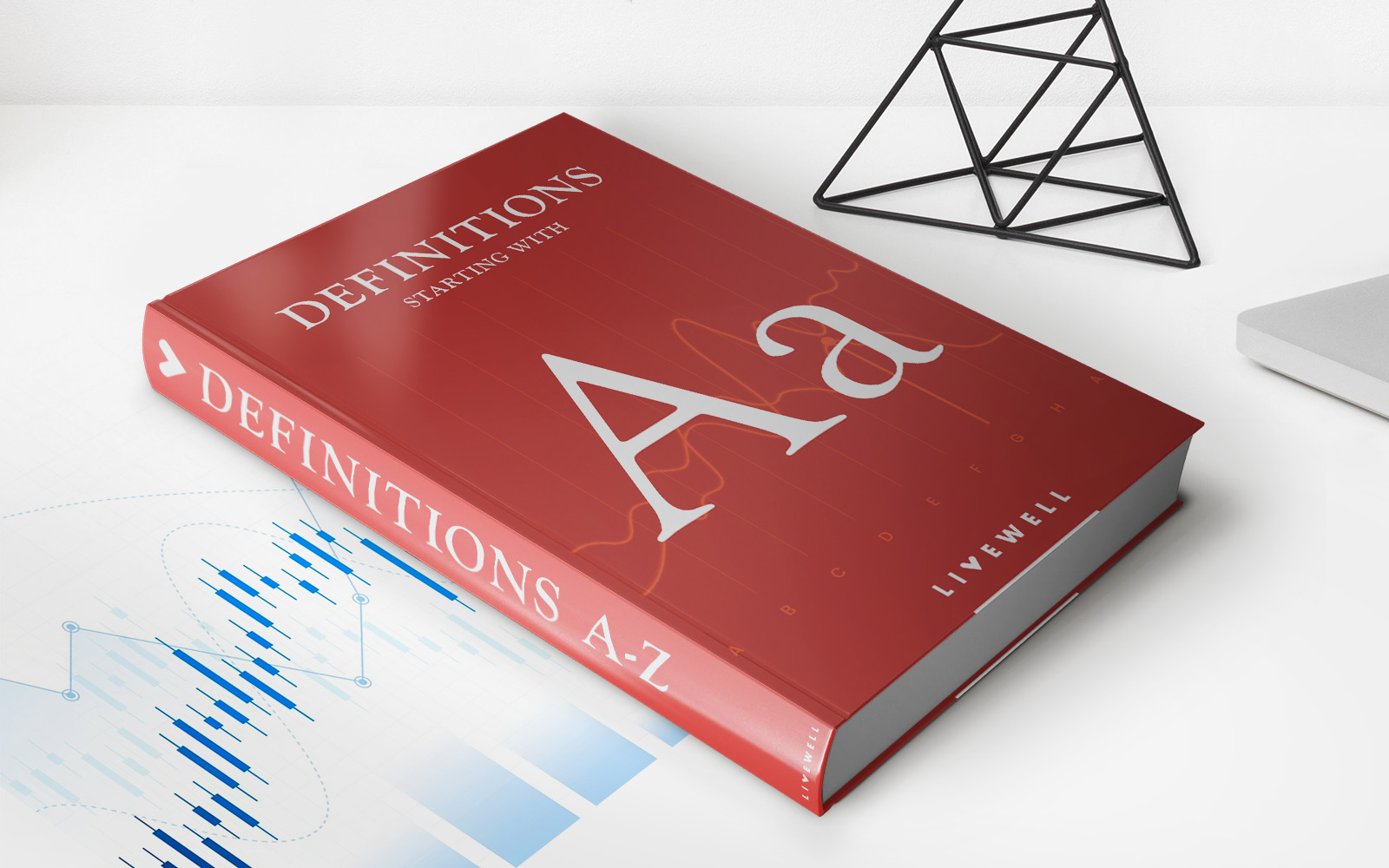Home>Finance>What Is The Characteristic Of A Unit Investment Trust?


Finance
What Is The Characteristic Of A Unit Investment Trust?
Modified: February 21, 2024
Discover the characteristics of a Unit Investment Trust in the world of finance. Learn how these investment vehicles work and how they can help diversify your portfolio.
(Many of the links in this article redirect to a specific reviewed product. Your purchase of these products through affiliate links helps to generate commission for LiveWell, at no extra cost. Learn more)
Table of Contents
- Introduction
- Definition of a Unit Investment Trust
- Structure of a Unit Investment Trust
- Characteristics of a Unit Investment Trust
- Portfolio Composition
- Investment Strategy
- Duration and Termination
- Risk Factors
- Advantages of Unit Investment Trusts
- Disadvantages of Unit Investment Trusts
- Tax Considerations
- Comparison with Other Investment Vehicles
- Conclusion
Introduction
A Unit Investment Trust (UIT) is a type of investment vehicle that is designed to provide individuals with access to a diversified portfolio of securities. It is a popular choice for many investors as it offers a unique combination of benefits that can help individuals meet their financial goals. Whether you are a seasoned investor or just starting out, understanding the characteristics and features of a Unit Investment Trust is essential for making informed investment decisions.
A Unit Investment Trust is a type of investment company that pools money from multiple investors to create a portfolio of securities, such as stocks, bonds, or other assets. Unlike a mutual fund or a closed-end fund, a Unit Investment Trust has a fixed portfolio and a specific termination date.
The structure of a Unit Investment Trust is simple and transparent. It is created by a sponsor or a trustee, who selects a specific set of securities to include in the trust. These securities are then divided into units, which are sold to investors. Each unit represents an undivided ownership interest in the portfolio of securities.
Investors in a Unit Investment Trust do not have the ability to buy or sell the securities in the portfolio. Instead, they can only buy or sell units of the trust itself. This structure provides investors with a predetermined investment strategy and a fixed portfolio, which can offer peace of mind and stability.
Unit Investment Trusts also have a specific termination date, which is predetermined when the trust is created. At this date, the trust will be dissolved, and the proceeds will be distributed to the investors based on the value of their units. This feature makes UITs suitable for investors with a specific investment horizon or those looking for a defined end date for their investment.
Now that we’ve covered the basics of Unit Investment Trusts, let’s delve deeper into their characteristics, portfolio composition, investment strategy, risk factors, advantages, and disadvantages.
Definition of a Unit Investment Trust
A Unit Investment Trust (UIT) is a type of investment company that pools money from multiple investors to create a diversified portfolio of securities. Unlike a mutual fund or a closed-end fund, a UIT has a fixed portfolio and a specific termination date.
A UIT is created by a sponsor or a trustee, who selects a specific set of securities to be included in the trust. These securities can include stocks, bonds, or other types of assets. The sponsor then divides the portfolio into units, which are sold to investors.
Each unit represents an undivided ownership interest in the portfolio of securities. Unlike a mutual fund, where investors can buy or sell shares at any time based on the net asset value (NAV), investors in a UIT can only buy or sell units of the trust itself. The price of each unit is determined by the value of the securities in the portfolio and is typically calculated once a day.
One of the defining characteristics of a UIT is its fixed portfolio. Once the securities are selected and divided into units, the portfolio remains unchanged throughout the life of the trust. This means that investors know exactly what securities they own and can have a clear understanding of the investment strategy and risk profile of the UIT.
Another key feature of UITs is their specific termination date. When a UIT is created, it is established with a predetermined termination date. At this date, the trust will be dissolved, and the proceeds will be distributed to the investors based on the value of their units. The termination date can range from a few months to several years, depending on the specific UIT.
It’s important to note that UITs are not actively managed like mutual funds. Once the securities are selected and the trust is created, the sponsor or trustee does not make any changes to the portfolio. This passive management approach can have both advantages and disadvantages for investors.
In the next sections, we will explore the structure and characteristics of UITs in more detail, including portfolio composition, investment strategy, risk factors, and the advantages and disadvantages of investing in UITs.
Structure of a Unit Investment Trust
The structure of a Unit Investment Trust (UIT) is simple and transparent, providing investors with a clear understanding of how their investments are organized.
A UIT is created by a sponsor or a trustee, who is responsible for selecting a specific set of securities to be included in the trust’s portfolio. These securities can vary and may include stocks, bonds, or a combination of different assets. The selection is based on the investment objectives and strategy of the UIT.
Once the securities are chosen, the portfolio is divided into units. Each unit represents an undivided ownership interest in the portfolio. The number of units created depends on the size of the trust and the value of the underlying securities.
Investors who are interested in the UIT can purchase units directly from the sponsor or trustee. The price of each unit is determined by the net asset value (NAV) of the trust, which is calculated by dividing the total value of the securities in the portfolio by the number of units outstanding. The NAV is typically calculated once a day.
Unlike mutual funds or exchange-traded funds (ETFs), which are open-ended investment companies, UITs have a fixed number of units. This means that once the units are sold to investors, no new units are created or issued. The fixed structure of UITs provides investors with a clear understanding of the number of units outstanding and the percentage ownership they hold in the trust.
Additionally, UITs have a specific termination date, which is predetermined at the time of creation. This termination date can vary depending on the UIT and can range from a few months to several years. Once the termination date is reached, the trust is dissolved, and the securities in the portfolio are sold. The proceeds from the sale are then distributed to the investors based on the value of their units.
The structure of UITs provides certain benefits for investors. It allows for a predetermined investment strategy and a fixed portfolio composition, providing investors with stability and transparency. Additionally, the fixed termination date can be appealing to investors who have specific investment horizons or those who are seeking a defined end date for their investment.
However, it’s important to note that the fixed structure of UITs also means that investors do not have the ability to buy or sell the underlying securities in the portfolio. Instead, they can only buy or sell units of the trust itself. This lack of liquidity can be a potential disadvantage for some investors who may prefer the flexibility of being able to trade the individual securities.
In the next sections, we will explore the characteristics, portfolio composition, investment strategy, risk factors, advantages, and disadvantages of investing in UITs in more detail.
Characteristics of a Unit Investment Trust
A Unit Investment Trust (UIT) has several key characteristics that differentiate it from other investment vehicles like mutual funds or exchange-traded funds (ETFs). Understanding these characteristics is essential for investors considering UITs as part of their investment strategy.
- Fixed Portfolio: One of the defining characteristics of a UIT is its fixed portfolio. Once the securities are selected and divided into units, the portfolio composition remains unchanged throughout the life of the trust. This provides investors with a clear understanding of the specific securities they own and the investment strategy of the UIT.
- Specific Termination Date: UITs have a predetermined termination date. At this date, the trust is dissolved, and the proceeds from the sale of the securities in the portfolio are distributed to the investors based on the value of their units. This feature makes UITs suitable for investors with specific investment horizons or those who prefer a defined end date.
- Predetermined Investment Strategy: UITs have a predetermined investment strategy that is outlined in the trust’s prospectus. The sponsor or trustee selects securities that align with the stated investment objectives and strategy. This provides investors with transparency and a clear understanding of how their money will be invested.
- Passive Management: Unlike mutual funds that are actively managed, UITs are passively managed. Once the trust is created and the securities are selected, no changes are made to the portfolio. The securities are held until the termination date without any active trading or adjustment.
- Transparent Pricing: The pricing of units in a UIT is based on the net asset value (NAV) of the underlying securities in the portfolio. The NAV is calculated once a day, providing investors with transparency and an accurate representation of the value of their investment.
- No Fund Manager: UITs do not have a fund manager who oversees the day-to-day operations or makes investment decisions. The portfolio composition is predetermined, and the sponsor or trustee assumes a custodial role rather than an active management role.
These characteristics make UITs a unique investment option. They offer a fixed and well-defined investment strategy, providing investors with stability and clarity. However, it’s important to consider the potential trade-offs. UITs lack the flexibility of actively managed funds and may not adapt to changing market conditions. Additionally, the fixed termination date means investors may have limited options when it comes to reinvesting their funds once the trust matures.
In the next sections, we will explore the portfolio composition, investment strategy, risk factors, advantages, and disadvantages of investing in UITs, providing a comprehensive understanding of this investment vehicle.
Portfolio Composition
The portfolio composition of a Unit Investment Trust (UIT) is a crucial factor to consider when evaluating its suitability for investment. The sponsor or trustee of the UIT is responsible for selecting the securities that will comprise the portfolio.
The securities included in a UIT can vary depending on the investment objectives and strategy of the trust. Common types of securities that may be included in a UIT portfolio are stocks, bonds, or a combination of both. The specific assets within the portfolio are outlined in the trust’s prospectus, which provides investors with transparency and a clear understanding of the investment holdings.
UITs often focus on a specific asset class or investment theme. For example, there are UITs that specialize in technology stocks, bond UITs that focus on a specific maturity range, or UITs that invest in a mix of stocks and bonds for balanced portfolios. This targeted approach allows investors to align their investment objectives with the specific UIT that matches their risk tolerance and investment preferences.
One of the key advantages of a UIT’s fixed portfolio is the transparency it offers. Investors know exactly which securities they own and can assess the portfolio’s diversification and risk exposure. This can be particularly important for investors who prefer to have a clear understanding of the underlying assets in their investment.
It’s worth noting that because UITs have a fixed portfolio, they do not actively trade or adjust the securities. The securities selected at the creation of the trust remain in the portfolio until the termination date. This passive management approach can result in lower portfolio turnover compared to actively managed funds or ETFs. However, it also means that the UIT portfolio may not adapt to changing market conditions or take advantage of short-term investment opportunities.
Before investing in a UIT, potential investors should carefully review the trust’s prospectus to gain insight into the portfolio composition. This includes understanding the types of securities, the sectors they represent, and any specific investment restrictions or guidelines that may be in place.
UITs can provide diversification benefits to investors by offering exposure to a range of assets and sectors. However, it’s essential to consider the investment strategy and the level of diversification within the portfolio. Investors should assess whether the portfolio aligns with their investment goals and risk tolerance.
In the next sections, we will delve into the investment strategy, risk factors, advantages, and disadvantages of investing in UITs, providing a comprehensive overview of this investment vehicle.
Investment Strategy
The investment strategy of a Unit Investment Trust (UIT) plays a critical role in determining the potential returns and risk characteristics of the trust. The sponsor or trustee of the UIT outlines the investment strategy in the trust’s prospectus, providing investors with clarity on how their funds will be allocated.
UITs typically follow a passive investment strategy, also known as a buy-and-hold strategy. Once the trust is created and the securities are selected, no changes are made to the portfolio. The securities are held until the predetermined termination date without active trading or adjustment.
The investment strategy of a UIT can vary based on the objectives and focus of the trust. Some UITs may aim to replicate the performance of a specific market index, such as the S&P 500 or a bond index. These UITs will typically invest in a diversified portfolio of securities that mirrors the composition of the index, providing investors with broad market exposure.
Other UITs may have a more specific investment strategy, such as targeting a particular segment of the market or emphasizing certain investment themes. For example, there are UITs that focus on high-dividend stocks or UITs that invest in socially responsible companies. These UITs use a selection process to identify and invest in securities that align with their specific investment objective.
UITs are generally designed for long-term investors who are seeking steady returns and are comfortable with a fixed portfolio. The passive investment approach allows investors to participate in the potential returns of the underlying securities over time. However, it’s important to note that the performance of a UIT will be influenced by the overall performance of the securities in the portfolio.
Investors should carefully review the investment strategy outlined in the UIT’s prospectus to determine if it aligns with their investment goals and risk tolerance. They should consider factors such as the types of securities included in the portfolio, the level of diversification, and any specific investment restrictions or guidelines.
Although UITs do not offer the same level of flexibility as actively managed funds, they can still be an effective investment option for individuals who prefer a more hands-off approach. By understanding the investment strategy of a UIT and how it fits with their overall investment plan, investors can make informed decisions about whether to include UITs in their portfolio.
In the next sections, we will explore the duration and termination of UITs, the risk factors associated with investing in UITs, as well as the advantages and disadvantages of this investment vehicle.
Duration and Termination
The duration and termination of a Unit Investment Trust (UIT) are key components that investors should consider when evaluating this investment vehicle. UITs have a specific lifespan that is predetermined at the time of creation.
The duration of a UIT refers to the period between its creation and termination. This duration can vary depending on the specific UIT and the investment objectives of the trust. UITs can have durations that range from a few months to several years.
UITs are designed for investors with specific investment horizons or those who prefer a defined end date for their investment. The predetermined termination date provides investors with a clear timeline for their investment, allowing them to plan accordingly and align their investment goals with the trust’s lifespan.
At the termination date, the UIT is dissolved, and the securities in the portfolio are sold. The proceeds from the sale are then distributed to the investors based on the value of their units. This distribution can be in the form of cash or reinvestment into another investment option, depending on the specific terms outlined in the trust’s prospectus and the investor’s preferences.
Investors should be aware of the termination date when considering investing in a UIT. It’s important to carefully review and understand the terms and conditions of the UIT, as well as any potential early termination options or cancellation fees. Additionally, investors should consider their own investment goals and time horizon to ensure that the UIT aligns with their needs.
Once the UIT reaches its termination date, investors may face the decision of where to reinvest their funds. Some UITs may offer the option to reinvest in a new trust or provide a recommendation for alternative investment options. However, investors are not obligated to reinvest in a UIT and may choose to allocate their funds elsewhere based on their investment objectives and market conditions at that time.
It’s important to note that because UITs have a fixed termination date, they may not provide the same level of flexibility as other investment vehicles, such as mutual funds or ETFs. Investors who require ongoing liquidity or the ability to easily change their investment allocations should carefully consider if a UIT aligns with their needs.
Overall, the specific duration and termination date of a UIT provide investors with a well-defined investment horizon and an opportunity to plan for the eventual distribution of their investment. By understanding the duration and termination features of UITs, investors can make informed decisions about including them in their investment strategy.
In the next sections, we will explore the risk factors associated with investing in UITs, as well as the advantages and disadvantages of this investment vehicle.
Risk Factors
As with any investment, there are inherent risks associated with investing in a Unit Investment Trust (UIT). Understanding and evaluating these risk factors is vital in making informed investment decisions.
1. Market Risk: UITs are subject to market risk, which refers to the potential for losses due to changes in the overall market conditions. Factors such as economic events, geopolitical issues, and market volatility can impact the performance of the securities held within the trust’s portfolio.
2. Interest Rate Risk: UITs that invest in fixed-income securities, such as bonds, are exposed to interest rate risk. When interest rates rise, the value of existing bonds in the portfolio may decrease, potentially leading to a decline in the UIT’s net asset value (NAV).
3. Credit Risk: UITs that invest in bonds or other debt instruments are also subject to credit risk. This risk refers to the possibility of the issuer defaulting on their obligations, resulting in potential losses for the UIT and its investors.
4. Liquidity Risk: UITs may face liquidity risk if the underlying securities in the portfolio experience limited trading activity or have a lack of buyers in the market. This can make it more difficult for the UIT to sell securities at favorable prices, potentially impacting the performance and ability to meet the redemption requests of unit holders.
5. Reinvestment Risk: UITs that distribute income, such as dividends or interest payments, may be exposed to reinvestment risk. This refers to the risk that the proceeds from the maturing or selling of securities may need to be reinvested at lower interest rates or less favorable terms.
6. Legal and Regulatory Risks: UITs are subject to legal and regulatory risks, including changes in tax laws, government regulations, or other regulatory actions that may impact the operation or structure of the UIT.
It’s important for investors to carefully review the risk factors outlined in the UIT’s prospectus and consult with their financial advisor to understand the specific risks associated with the trust. By assessing their risk tolerance and considering these factors, investors can make informed decisions about the suitability of UITs within their portfolio.
Furthermore, it’s crucial to note that past performance of a UIT does not guarantee future results and that the value of the UIT’s units can fluctuate based on market conditions and the performance of the underlying securities.
Now that we have explored the risk factors associated with investing in UITs, let’s examine the advantages and disadvantages of this investment vehicle.
Advantages of Unit Investment Trusts
Unit Investment Trusts (UITs) offer several advantages that make them an appealing investment option for certain individuals. Understanding these advantages can help investors determine if UITs align with their financial goals and investment preferences.
1. Diversification: UITs typically hold a diversified portfolio of securities. This diversification helps spread risk across different asset classes, sectors, or geographical regions, reducing the impact of any single security on the overall portfolio. Diversification can potentially enhance returns and mitigate downside risk.
2. Transparency: UITs provide investors with transparency. The portfolio composition is disclosed in the trust’s prospectus, allowing investors to have a clear understanding of the underlying securities and their respective weightings. This transparency enables investors to make informed decisions based on their investment objectives and risk tolerance.
3. Fixed Portfolio: The fixed portfolio structure of UITs is a unique advantage. Once the securities are selected and the trust is created, there are no changes made to the portfolio. This feature provides investors with stability and can be particularly attractive to individuals who prefer a more passive investment approach.
4. Defined Investment Horizon: UITs have a specific termination date. This feature can be beneficial for investors with a specific investment horizon or those who prefer a known end date. It allows them to align their investment with their financial goals and plan accordingly.
5. Tax Efficiency: UITs generally have lower turnover compared to actively managed funds. This lower turnover can result in potentially fewer taxable events for investors, leading to improved tax efficiency. Additionally, UITs may provide a source of tax-advantaged income, such as qualified dividend income or tax-exempt interest, depending on the securities held within the trust.
6. Cost Effectiveness: UITs often have lower expense ratios compared to actively managed mutual funds. Because UITs typically follow a passive investment strategy and do not involve active trading, they tend to have lower management fees and operational costs. This cost effectiveness can be advantageous for investors looking to minimize expenses and maximize returns.
It’s important to note that while these advantages may make UITs attractive to certain investors, they may not be suitable for everyone. It’s crucial for investors to carefully consider the specific characteristics, risks, and investment objectives of any UIT before making an investment decision.
In the next section, we will explore the disadvantages of UITs, providing a comprehensive overview of the pros and cons of this investment vehicle.
Disadvantages of Unit Investment Trusts
While Unit Investment Trusts (UITs) offer several advantages, it is important for investors to also consider the potential disadvantages associated with this investment vehicle. Understanding these drawbacks can help investors make informed decisions and assess whether UITs are suitable for their investment needs.
1. Limited Flexibility: UITs have a fixed portfolio that remains unchanged throughout the life of the trust. Investors do not have the ability to buy or sell the underlying securities in the portfolio. Instead, they can only buy or sell units of the trust itself. This lack of flexibility may restrict investors who prefer the ability to make changes to their investments based on market conditions or their individual circumstances.
2. Lack of Active Management: Unlike actively managed funds, UITs do not have a fund manager who actively makes investment decisions or adjusts the portfolio. The securities in the portfolio are selected at the creation of the trust and held until the termination date. This passive management approach may limit the ability of the UIT to adapt to changing market conditions or take advantage of short-term investment opportunities.
3. Liquidity Constraints: UITs may have limited liquidity compared to other investment vehicles, such as mutual funds or exchange-traded funds. While investors can buy or sell units of the UIT, the liquidity of the underlying securities may differ. In some cases, investors may experience challenges in selling their units or may face potential delays in receiving the proceeds upon redemption.
4. Termination Date Restrictions: The predetermined termination date of a UIT can be both an advantage and a disadvantage. While the termination date provides investors with a defined end date and the potential to plan their investments accordingly, it can also present challenges. Once the UIT reaches its termination date, investors may need to decide on reinvesting their funds or finding alternative investment options, which may result in a disruption to their investment strategy.
5. Potential Lack of Flexibility: Due to the fixed and predetermined nature of UITs, certain investment options, changes, or adjustments that could be beneficial for an investor’s portfolio may not be available. This lack of flexibility may limit an investor’s ability to achieve specific investment goals or adapt their strategy to changing market conditions.
6. Redemption Fees: Some UITs may impose redemption fees if investors sell their units before the termination date. These fees can act as a deterrent to early withdrawals and may impact the overall return on investment when exiting the UIT before it reaches maturity.
It’s essential for investors to carefully assess these disadvantages and consider how they align with their investment objectives, risk tolerance, and preference for flexibility and liquidity. Given the unique characteristics of UITs, individuals should thoroughly research and consult with their financial advisor before investing in these trusts.
In the next section, we will explore the tax considerations related to investing in UITs, providing additional insights into this investment vehicle.
Tax Considerations
When investing in Unit Investment Trusts (UITs), it is important to understand the tax implications associated with these investment vehicles. While tax considerations should not be the sole basis for investment decisions, they can impact the after-tax returns and overall tax efficiency of investments.
1. Capital Gains and Dividends: UITs may generate capital gains or dividends from the sale of securities in the portfolio or from distributions received from the securities held. These gains and dividends are typically subject to taxation. How these gains and dividends are taxed, whether as short-term or long-term capital gains or as qualified dividends, depends on various factors, including the holding period and the investor’s tax bracket.
2. Tax-Exempt Income: Certain UITs may hold tax-exempt securities, such as municipal bonds or Treasury bonds. The interest income generated from these tax-exempt securities is generally exempt from federal income tax. However, it’s important to note that tax-exempt income may still be subject to state or local taxes, depending on the investor’s place of residence.
3. Reinvestment of Distributions: When UITs distribute income or capital gains, investors have the option to reinvest these distributions back into the UIT or receive them in cash. If distributions are reinvested, they are generally taxable in the year they are received, even if they are not actually received in cash.
4. Tax Efficiency: UITs, especially those with low turnover and a passive investment strategy, often have lower taxable events compared to actively managed funds. This can result in improved tax efficiency, as fewer taxable events may lead to reduced capital gains distributions and potential tax liabilities for investors.
5. Annual Tax Reporting: UITs provide investors with a Form 1099-DIV or similar tax statement that reports the income and capital gains distributions received during the year. Investors are required to report these distributions as part of their annual tax returns and pay any applicable taxes on the taxable portions.
It’s important for investors to consult with a tax advisor or tax professional to understand how investing in UITs may impact their specific tax situation. Each investor’s tax situation is unique, and factors such as the investor’s income, tax bracket, and other investments should be taken into consideration.
Investors should also be aware of potential tax consequences if they decide to sell their units in a UIT before the trust reaches its termination date. Early redemption may result in a taxable event, subjecting the investor to potential capital gains or losses on the units sold.
By understanding the tax considerations associated with investing in UITs, investors can make more informed decisions and assess the potential tax implications on their investment returns.
In the next section, we will compare UITs with other investment vehicles, offering insights into their similarities and differences.
Comparison with Other Investment Vehicles
Unit Investment Trusts (UITs) offer a unique investment option that differs from other common investment vehicles, such as mutual funds, exchange-traded funds (ETFs), and individual securities. Understanding the similarities and differences between UITs and these other investment vehicles can help investors make informed decisions based on their investment objectives and preferences.
Mutual Funds: UITs and mutual funds both pool money from multiple investors to create a diversified portfolio of securities. However, there are key differences between the two. UITs have a fixed portfolio and typically follow a passive management strategy, while mutual funds have actively managed portfolios that are subject to ongoing buying and selling of securities. Additionally, mutual funds are typically open-ended investment vehicles, meaning that investors can buy or sell shares directly from the fund at any time at the net asset value (NAV) based on the end-of-day pricing. In contrast, UITs have a fixed number of units and trade on the secondary market, meaning investors can buy or sell units from other investors at market prices.
Exchange-Traded Funds (ETFs): ETFs also offer investors the opportunity to gain exposure to a diversified portfolio of securities. However, ETFs are different from UITs in several ways. ETFs, like mutual funds, are typically open-ended investment vehicles, and investors can buy or sell shares directly from the fund at market prices throughout the trading day. Unlike UITs, ETFs have an underlying basket of securities that can be adjusted daily by authorized participants. Additionally, ETFs can be actively or passively managed, and they often aim to track the performance of a specific index.
Individual Securities: Investing in individual securities, such as stocks or bonds, offers the highest level of flexibility and control. Unlike UITs, individual securities can be bought and sold according to the investor’s preferences and market conditions. However, selecting and managing a portfolio of individual securities requires significant research, analysis, and ongoing monitoring. It also involves a higher degree of risk and potential volatility compared to investing in diversified funds like UITs.
When considering UITs, mutual funds, ETFs, or individual securities, investors should evaluate factors such as their investment goals, risk tolerance, time horizon, desired level of diversification, and control over the portfolio. It is essential to carefully review the prospectuses, pricing, management styles, and historical performance of each investment option to make an informed decision.
It’s also worth noting that all investment vehicles are subject to market risk and potential loss of principal. Therefore, diversification within one’s investment portfolio, regardless of the investment vehicle chosen, is a prudent strategy to mitigate risk.
In the next section, we will conclude our discussion by summarizing the key points covered and emphasizing the benefits of understanding the characteristics and considerations of investing in UITs.
Conclusion
Unit Investment Trusts (UITs) offer investors a unique investment vehicle with its own set of characteristics and considerations. Understanding the key features, advantages, and disadvantages of UITs is crucial for making informed investment decisions.
UITs provide investors with a well-defined investment strategy, a fixed portfolio, and a specific termination date. This can offer stability, transparency, and a clear investment horizon for individuals with specific objectives and investment timelines.
UITs can offer diversification across different asset classes and sectors. This diversification helps spread risk and potentially enhances returns. Additionally, the structure of UITs generally results in lower expenses and improved tax efficiency compared to actively managed funds.
However, UITs also have certain limitations. The fixed portfolio and lack of active management may restrict an investor’s ability to adjust their holdings according to changing market conditions. Liquidity constraints and potential early redemption fees should also be considered.
When comparing UITs with other investment vehicles, such as mutual funds, ETFs, or individual securities, it is important to consider factors like flexibility, liquidity, management style, and associated costs.
Overall, UITs can be a suitable investment option for individuals seeking a passive investment approach, a specific investment strategy, and a defined investment timeline. However, it is crucial for investors to thoroughly research UITs, read the prospectus, and consult with their financial advisors to ensure alignment with their investment goals and risk tolerance.
Investing always comes with risks, including the potential loss of principal. Therefore, diversification, understanding risk factors, and monitoring investments are key practices for investors across all investment vehicles.
By understanding the characteristics and considerations of UITs, investors can make educated decisions about including them in their investment portfolios and work towards achieving their financial goals with confidence.
